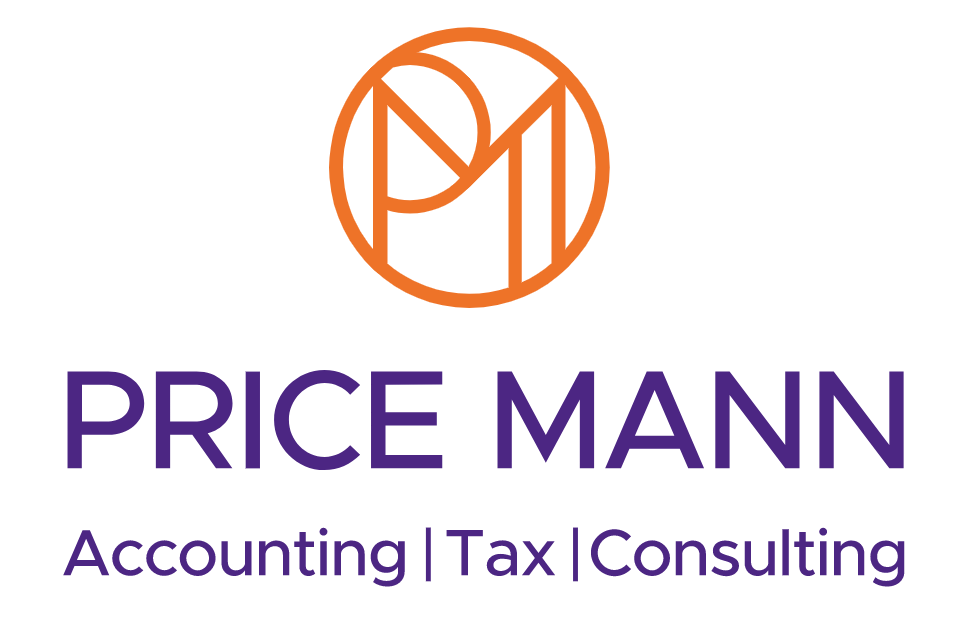Budget Highlights
A guide to the Autumn Budget 2025
The Chancellor delivered her long-awaited and very late Budget highlighting intentions to review public spending, to freeze thresholds, to remove and reform certain allowances and to highlight future tax increases. It was a Budget that added more complexity into an already complex tax system. As with previous Budgets this complexity may increase as we will see a number of consultations and further details shared over the next few weeks.
The significant tax rises announced by the Chancellor is an attempt to boost her credibility with financial markets and reduce the risk that she has to raise taxes again in twelve months’ time. It is not clear she is completely in the clear on the fiscal front though. There remains uncertainty about the impacts of the various tax rises, and the risk is that UK growth may still disappoint the OBR’s new and more pessimistic forecasts.
Key measures announced by the Chancellor in the Autumn Budget 2025 are summarised below:
| Income tax rates: England, Wales & Northern Ireland (non-dividend income) | 2026/27 | 2025/26 |
|---|---|---|
| 0% starting rate for savings only | Up to £5,000 | Up to £5,000 |
| 0% on personal allowance (subject to any clawback of PA) | £0 - £12,570 | £0 - £12,570 |
| 20% basic rate tax | £12,571 - £50,270 | £12,571 - £50,270 |
| 40% higher rate tax | £50,271 - £125,140 | £50,271 - £125,140 |
| 45% additional rate tax | Above £125,140 | Above £125,140 |
| Scottish rates of income tax (non-dividend income) | 2026/27 | 2025/26 |
|---|---|---|
| 0% on personal allowance (subject to any clawback of PA) | £0 - £12,570 | £0 - £12,570 |
| 19% starting rate | £12,571 - £15,397 | £12,571 - £15,397 |
| 20% basic rate tax | £15,398 - £27,491 | £15,398 - £27,491 |
| 21% intermediate rate tax | £27,492 - £43,662 | £27,492 - £43,662 |
| 42% higher rate tax | £43,663 - £75,000 | £43,663 - £75,000 |
| 45% advanced rate | £75,001 - £125,140 | £75,001 - £125,140 |
| 48% top rate | Above £125,140 | Above £125,140 |
| Income tax rates (dividend income) | 2026/27 | 2025/26 |
|---|---|---|
| Dividend allowance | £500 | £500 |
| Dividend ordinary rate (for dividends within basic rate band) | 10.75% | 8.75% |
| Dividend upper rate (for dividends within the higher rate band) | 35.75% | 33.75% |
| Dividend additional rate (for dividends above the higher rate band) | 39.35% | 39.35% |
BUSINESSES
Corporation tax
The headline announcements on the corporate tax roadmap 2024 remain unchanged and confirmed the major features of the corporation tax regime for the duration of this Parliament. This includes:
- capping the headline rate of corporation tax at 25%
- maintaining the Small Profits Rate and marginal relief at their current rates and thresholds
- maintaining permanent full expensing
- maintaining the £1m Annual Investment Allowance, writing down allowances, and the Structures and Buildings Allowance
- maintaining the rates for the merged R&D Expenditure Credit scheme and the Enhanced Support for R&D Intensive SMEs
- maintaining the Patent Box.
Other measures announced in the Budget 2025 for corporation tax included:
Penalties for late submission of corporation tax returns late from 1 April 2026 will be doubled. This will be legislated for in Finance Bill 2025/26.
As part of modernising and standardising corporation tax submission, the government will consult in early 2026 on delivery timescales and enforcement for prescribing the content and tagging of the corporation tax computation.
The government will introduce legislation in Finance Bill 2025/26 to set out the treatment for corporation tax purposes of intra-group payments made in return for surrendered Research & Development Expenditure Credit (RDEC), Audio-Visual Expenditure Credit (AVEC) and Video Games Expenditure Credit (VGEC). This will come into effect for payments made on or after 26 November 2025.
The government will extend for a further year the 100% first year allowances (FYA) for qualifying expenditure on zero emission cars and the 100% FYA for qualifying expenditure on plant or machinery for electric vehicle (EV) charge points. The FYA will now be in place until 31 March 2027 for corporation tax purposes, and 5 April 2027 for income tax purposes.
MTD
Making Tax Digital (MTD) for Income Tax will be extended to sole traders and landlords with income over £20,000 by the end of this Parliament. This expands the rollout of MTD for Income Tax, which is April 2026 for sole traders and landlords with income over £50,000 and April 2027 for those with income over £30,000.
The government has also announced a one-year deferral for several small groups of taxpayers (recipients of trust and estates income, individuals who use averaging adjustments, those eligible for qualifying care relief, and non-UK resident foreign entertainers or sportspeople). These customers should continue to meet their ITSA obligations as they would now and be ready to join MTD for Income Tax from April 2027. Building on the Spring Statement 2025 announcement on customers who have a Power of Attorney, customers under a deputyship (as appointed by the Court of Protection) will be permanently exempt from MTD.
Increase in National Minimum Wage and other employment opportunities
From 1 April 2026, the National Living Wage will increase by 4.1% to £12.71 per hour. The National Minimum Wage for 18-20 year olds will also increase by 8.5% to £10.85 per hour and for 16-17-year-olds and apprentices by 6.0% to £8.00 per hour.
The proposed increase will mean that the cost of hiring an employee above 21 years for 40 a week would be over £30,000 for the employers.
In order to tackle the youth unemployment, the government has announced it will guarantee a six-month paid work placement for every eligible 18-21-year-old who has been on Universal Credit and looking for work for 18 months. This will cover 100% of employment costs for 25 hours a week at the relevant minimum wage, and additional wraparound support. Further details of the scheme including the implementation date are awaited.
Rates relief
It was previously intended to introduce permanently lower business rates multipliers for high street retail, hospitality and leisure properties (RHL) from 2026/27, funding it through a higher multiplier for the most valuable properties. Further details will be announced.
From 1 April 2026, the government is introducing a high-value business rates multiplier for properties with rateable values of £500,000 and above 2.8p above the national standard multiplier, making the high-value multiplier 50.8p in 2026/27.
The government is also taking the next steps to reform business rates with a consultation being issued. The government is supporting businesses to expand and grow by providing an additional two years of Small Business Rates Relief for businesses expanding into a second property, and continuing work to transform business rates by publishing a call for evidence exploring how to tackle barriers to investment. The call for evidence also explores concerns a small number of ratepayers have raised around the ‘receipts and expenditure’ valuation methodology and its impacts on long-term, high value investments.
IHT
No rate changes for Inheritance tax have been announced and the thresholds remain frozen until April 2031. As previously announced, unused pension funds and death benefits will be included in estates from April 2027. In addition, legislation will be introduced in Finance Bill 2025/26 to increase the £1m allowance for the 100% rate of APR and BPR in line with CPI from 6 April 2031.
Legislation will be introduced in Finance Bill 2025/26 to fix the NRB, RNRB, and RNRB taper threshold at their current levels until the end of the tax year 2030-31.
CGT
From 6 April 2025, the rate for Business Asset Disposal Relief and Investors’ Relief increased from 10% to 14%. From April 2026, this will further rise from 14% to 18%. The Investors’ Relief lifetime limit was reduced from £10m to £1m for qualifying disposals made on or after 30 October 2024.
Capital gains tax relief on disposals to employee ownership trusts (EOT) will be reduced from 100% to 50% for disposals on or after 26 November 2025. EOTs are a corporate ownership structure whereby a controlling interest in a company is held by the trustees. Previously, company owners who made a qualifying disposal of shares to the trustees of an EOT benefited from 100% relief of CGT, but under this measure, 50% of gains will be treated as chargeable gains and subject to CGT.
Capital allowances: Key features to be maintained
The government will maintain key features of the capital allowances regime, including full expensing with a 100% first-year allowance for qualifying new main rate plant and machinery, and a 50% first-year allowance for special rate machinery, making the UK the only major economy with permanent full expensing.
The
Annual Investment Allowance will continue to offer 100% first-year relief for plant and machinery investments
up to £1m for all businesses, including unincorporated ones.
Writing down allowances will remain flexible, allowing businesses to choose which allowances to claim for main and special rate machinery.
From 1 January 2026 a new First-Year Allowance of 40% for main-rate assets is introduced. The relief will be applying to certain assets beyond the current availability of full expensing and the AIA. This will enable the leasing sector, which is currently excluded, to now be eligible for first year allowances. Cars, second-hand assets and assets for leasing overseas will not be eligible.
From 1 April 2026 for corporation tax and 6 April for Income Tax, main rate writing-down allowances will reduce from 18% to 14%.
VAT Thresholds
There have been no announcements to the VAT thresholds and registration/deregistration limits or rates applicable to various products and services.
INDIVIDUALS
Income tax
The Chancellor previously announced that the thresholds will be uprated by inflation from April 2028 onwards. Instead, the freeze on personal tax thresholds – ie personal allowance, basic and higher-rate thresholds for income tax at the current level of £12,570 and £50,270 – will now be extended until 2030-31.
From April 2026, dividend tax rates will increase as follows:
- the ordinary rate rising from 8.75% to 10.75%
- the upper rate rising from 33.75% to 35.75%
- the additional rate remaining at 39.35%
From April 2027, tax rates on property and savings income will also increasing as follows:
- 20% to 22% (basic rate)
- 40% to 42% (higher rate)
- 45% to 47% (additional rate)
National Insurance on pension salary sacrifice schemes
From April 2029 the amount of employee pension contributions made through salary sacrifice that is exempt from National Insurance contributions (NICs) will be capped at £2,000 per year.
Employees who contribute up to £2,000 into their pension each year via salary sacrifice can continue to benefit in full, but employee and employer NICs will be charged in the usual way on the amount above £2,000.
The government also confirmed that employees who use salary sacrifice to access Tax-Free Childcare or Child Benefit can continue to do so, but any pension contributions above the £2,000 cap will now be subject to NICs.
Taxation of company cars
the appropriate % for tax years 2028/29 & 2029/30
As previously announced, the government set company car tax rates (benefits-in-kind) for tax years 2028/29 and 2029/30, with further details to be published.
- Appropriate percentages for zero emission and electric vehicles will increase by 2% per year in 2028/29 and 2029/30, rising to an appropriate percentage of 9% in tax year 2029/30.
- Appropriate percentages for all cars with emissions of 1 to 50g of CO2 per kilometre, including hybrid vehicles, will rise to 18% in tax year 2028/29 and 19% in tax year 2029/30.
- Appropriate percentages for all other vehicle bands will increase by 1% per year in tax years 2028/29 and 2029/30. This will be to a maximum appropriate percentage of 38% for tax year 2028/29 and 39% for tax year 2029/30.
Electric car drivers will be subject to a pay-per-mile charge (eVED) on battery electric and plug-in hybrid cars from April 2028. The mileage-based charge has been confirmed to be 3p per mile for battery electric cars and 1.5p per mile for hybrid vehicles for the tax year 2028/29.
State Pension and Simple Assessment
The government will ease the administrative burden for pensioners whose sole income is the basic or new State Pension without any increments so that they do not have to pay small amounts of tax via Simple Assessment from 2027/28 if the new or basic State Pension exceeds the Personal Allowance from that point. The government is exploring the best way to achieve this and will set out more detail next year. Customers do not need to contact HMRC at this stage.
The basic and new State Pension will be increase by 4.8% from April 2026.
More timely payment for self-assessment
From April 2029, the government will require Income Tax Self Assessment (ITSA) taxpayers who also have PAYE income to pay more of their tax payments through the year via the PAYE system. This will help spread the taxpayer’s ITSA liability across the year. Taxpayers with both ITSA and PAYE income will pay some of their forecast ITSA tax through their employer or pension provider, deducting their ITSA tax via the normal PAYE process. These payments will be based on their previous ITSA liability.
The government will consult in early 2026 on detailed design options, and on options for timelier tax payment for those with self-assessment income only.
These proposals take steps to ensure income tax self-assessment taxpayers pay tax automatically via regular payments throughout the year, moving taxpayers away from having to pay unexpected bills and reducing the number of falling into tax debt. No one will pay more tax than they do under the rules today, the only change is when the tax is paid.
The government will consult on how best to support taxpayers through the one-off impacts of this change.
Reduction in Cash ISA limits
From 6 April 2027 the annual ISA cash limit will be set at £12,000, within the overall annual ISA limit of £20,000. Annual subscription limits will remain at £20,000 for ISAs, £4,000 for Lifetime ISAs and £9,000 for Junior ISAs and Child Trust Funds until 5 April 2031. Savers over the age of 65 will continue to be able to save up to £20,000 in a cash ISA each year.
OTHER
Additional resources for HMRC and tackling fraud
The government will invest £89m over the next five years to fund additional staff to increase HMRC’s capacity to collect more tax debt.
The government is taking action to tackle those who abuse insolvency processes to evade tax and write off their debts. The government will fund the recruitment of 50 additional insolvency service staff within a new Abusive Phoenixism Taskforce to disqualify more rogue directors and will amend the Company Directors Disqualification Act to extend the circumstances in which directors who break the law can be disqualified.
The government will invest £25m over the next five years to recruit additional Insolvency Service staff to disqualify more rogue directors. The government will also amend the Company Directors Disqualification Act 1986 to extend the circumstances in which directors who break the law can be disqualified. This will be legislated for in a future Finance Bill.
For more information regarding the changes, contact us.













